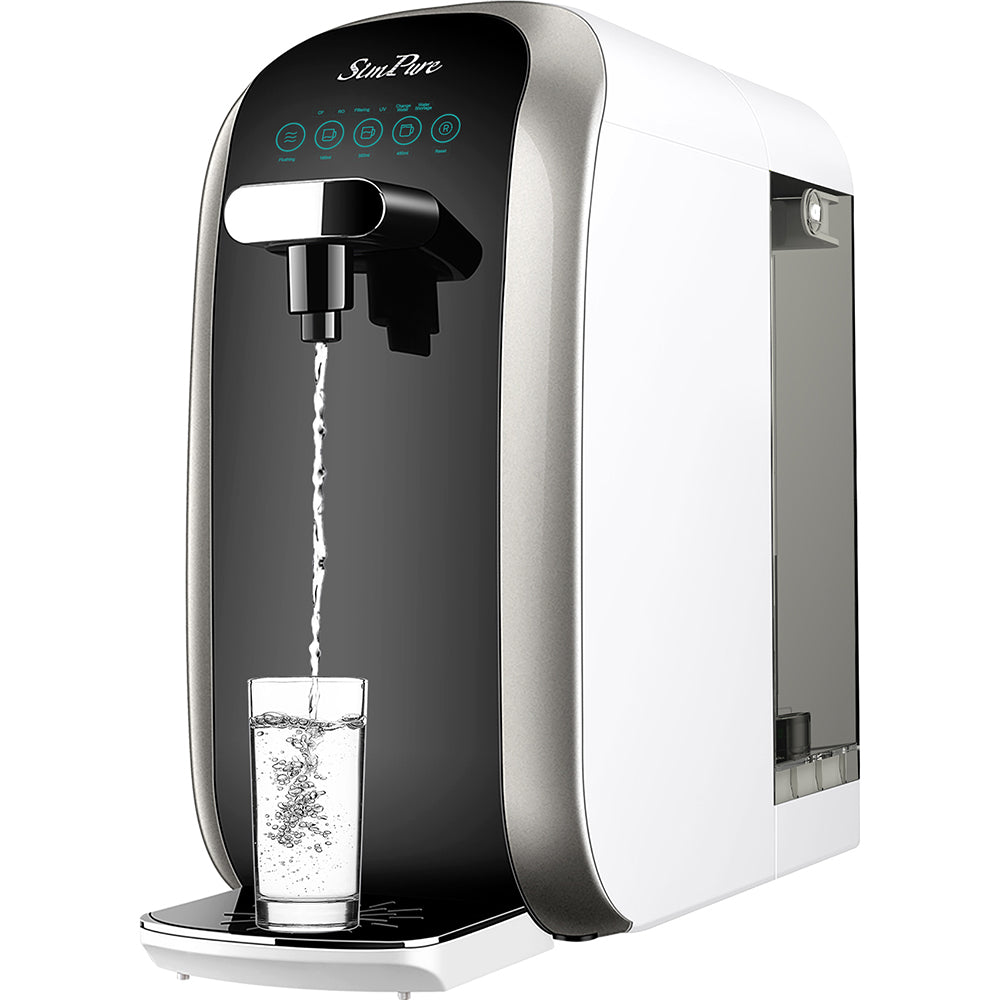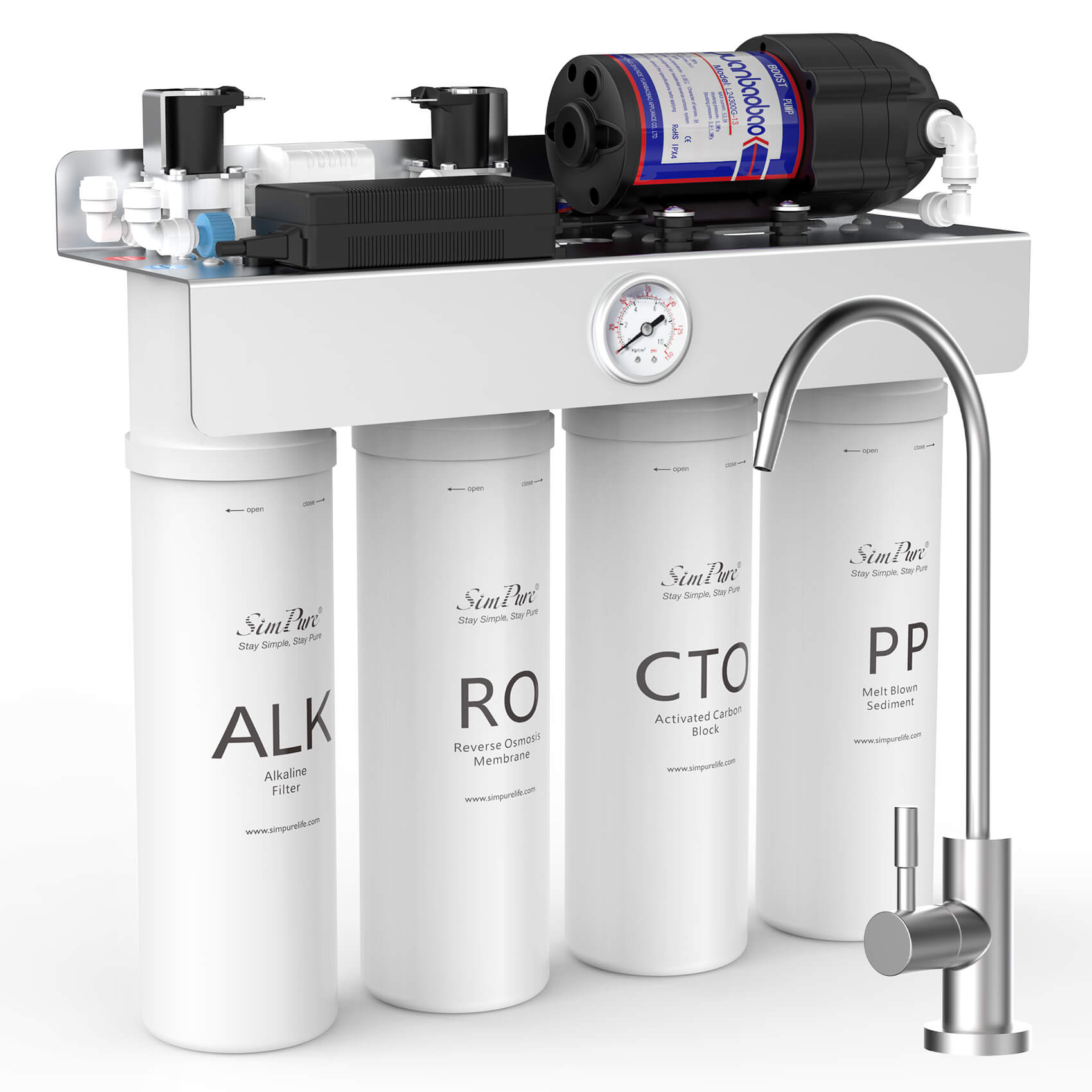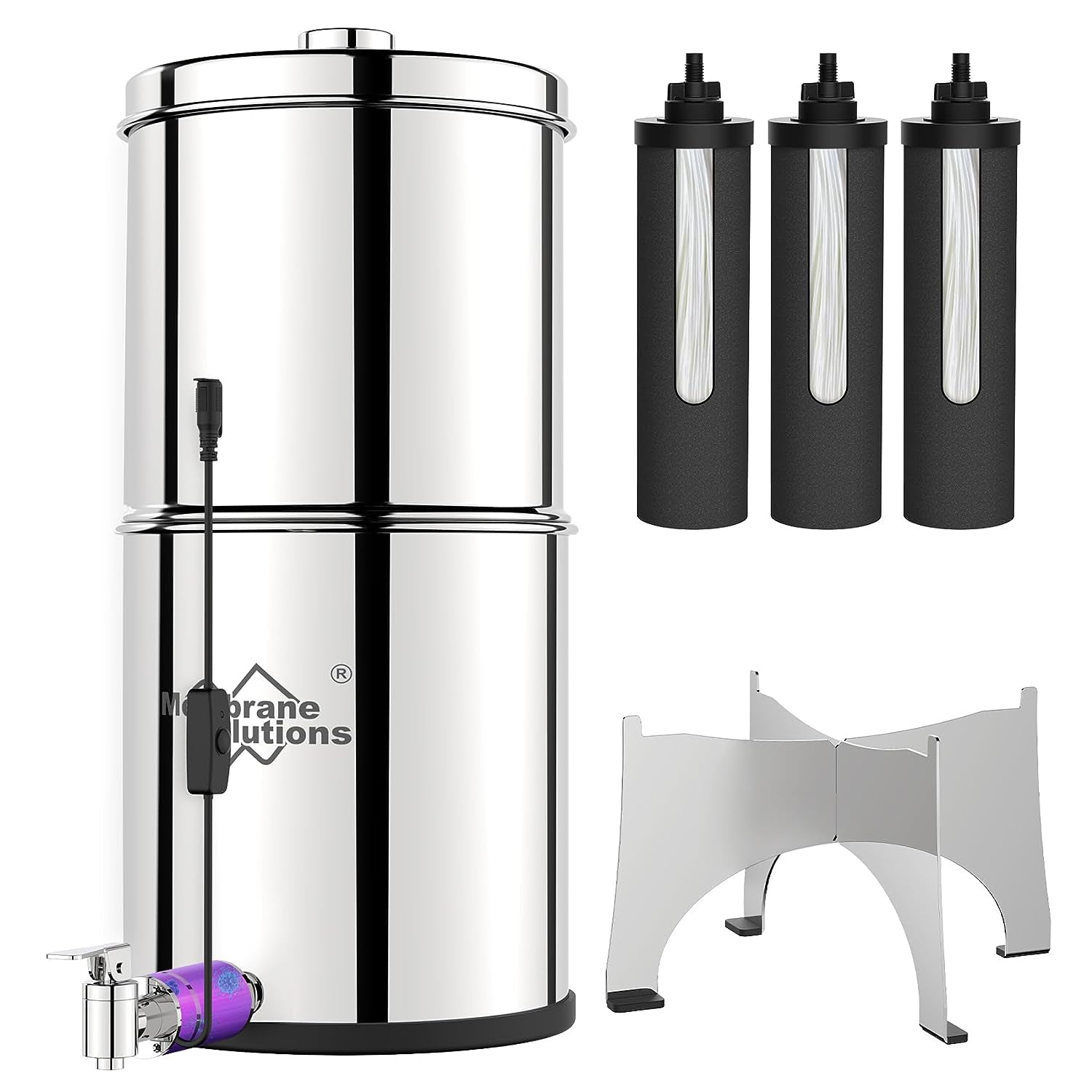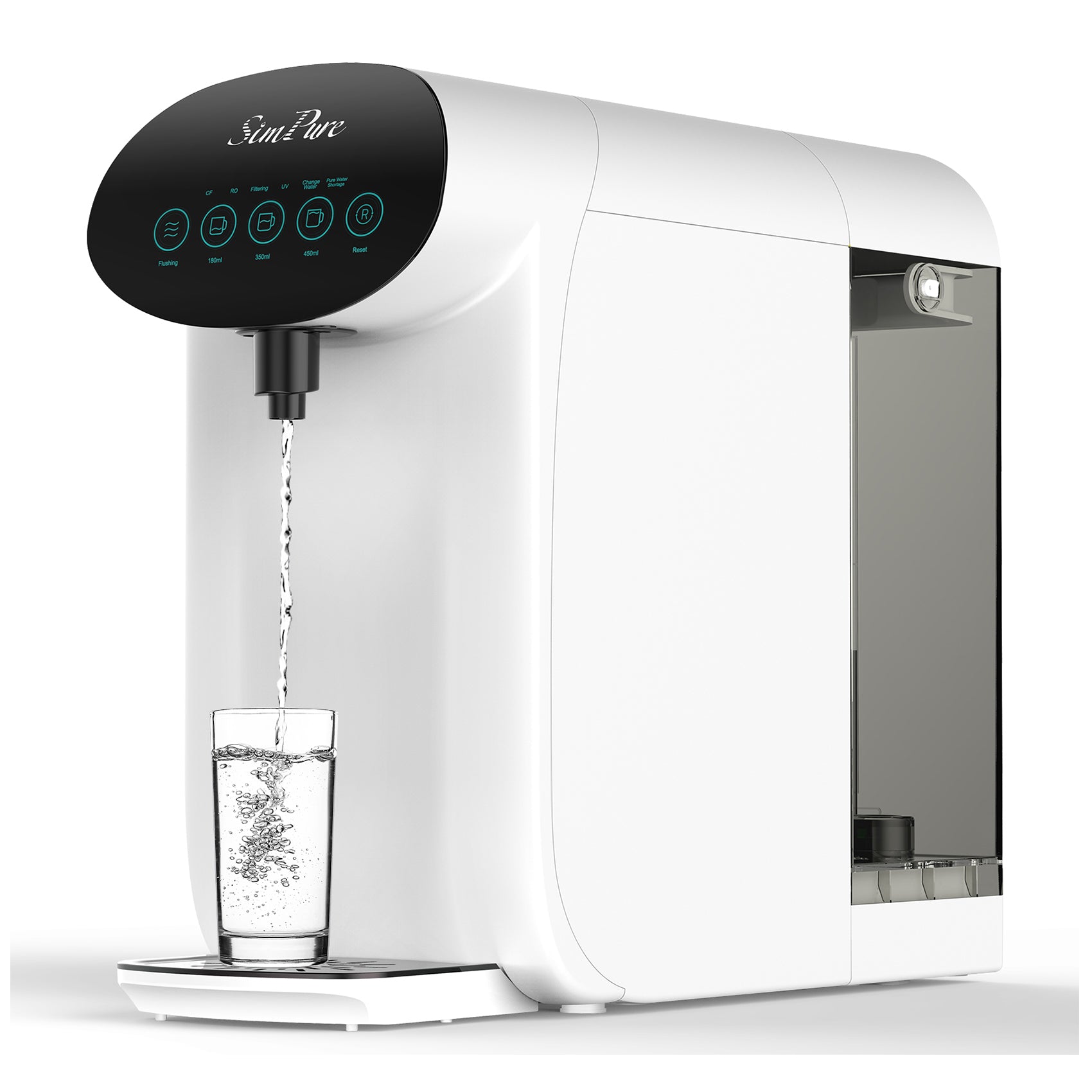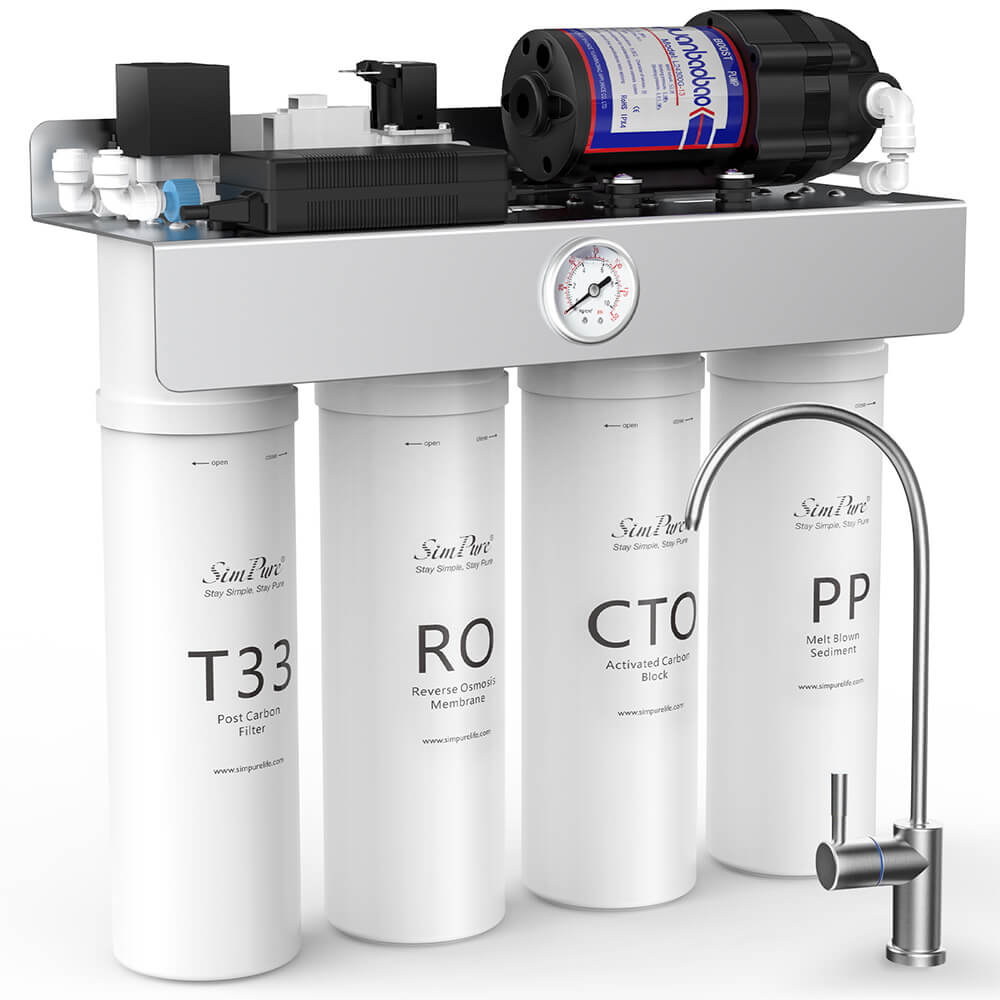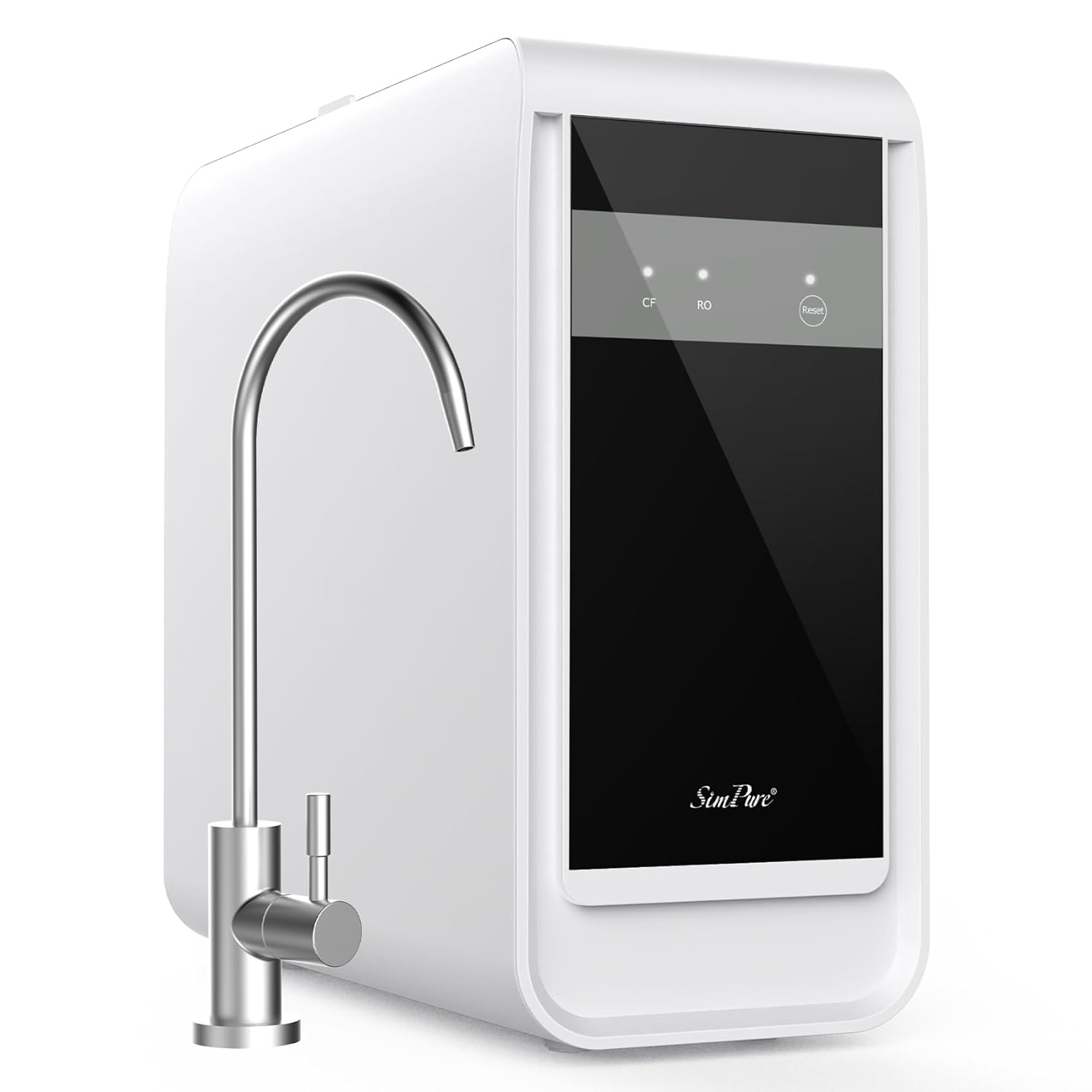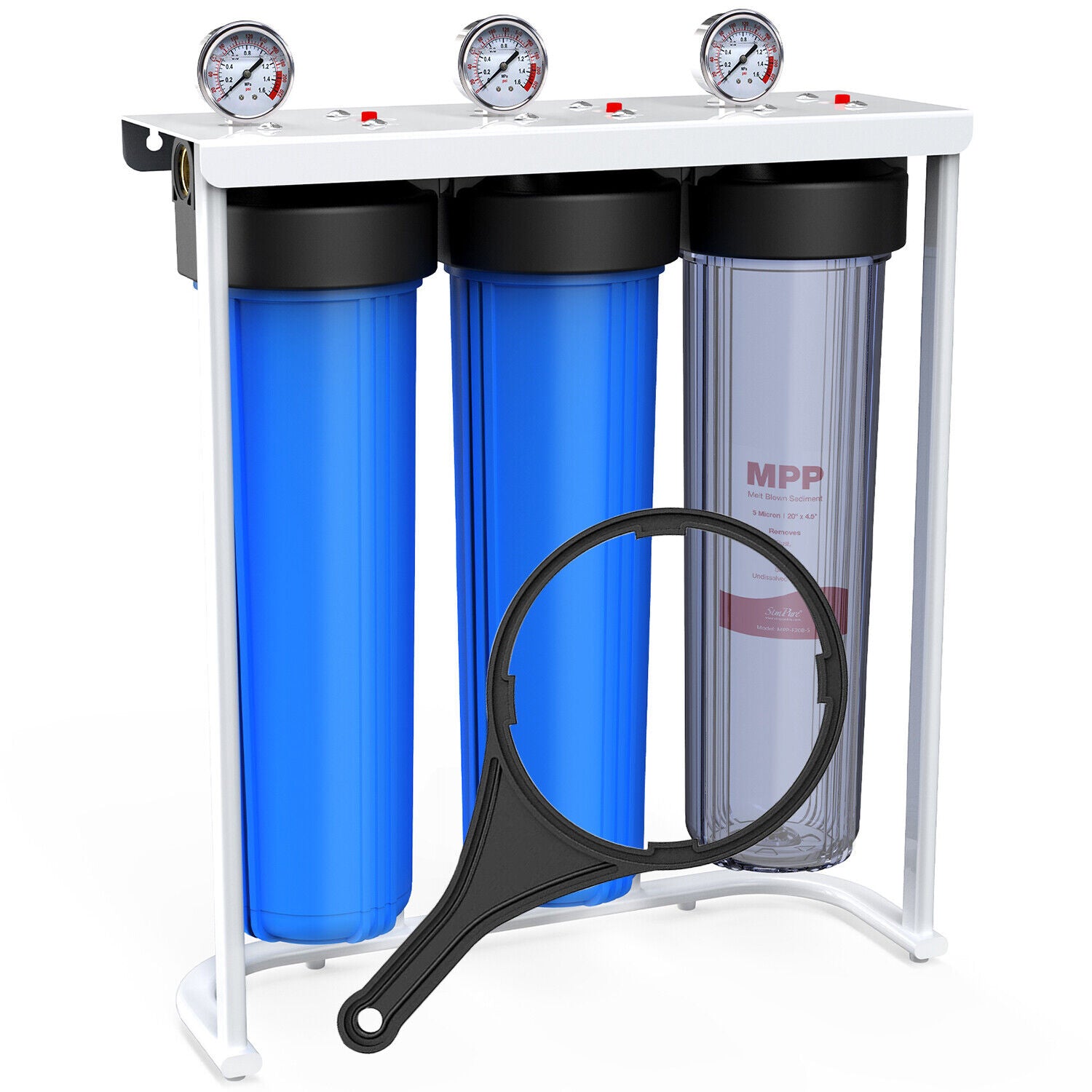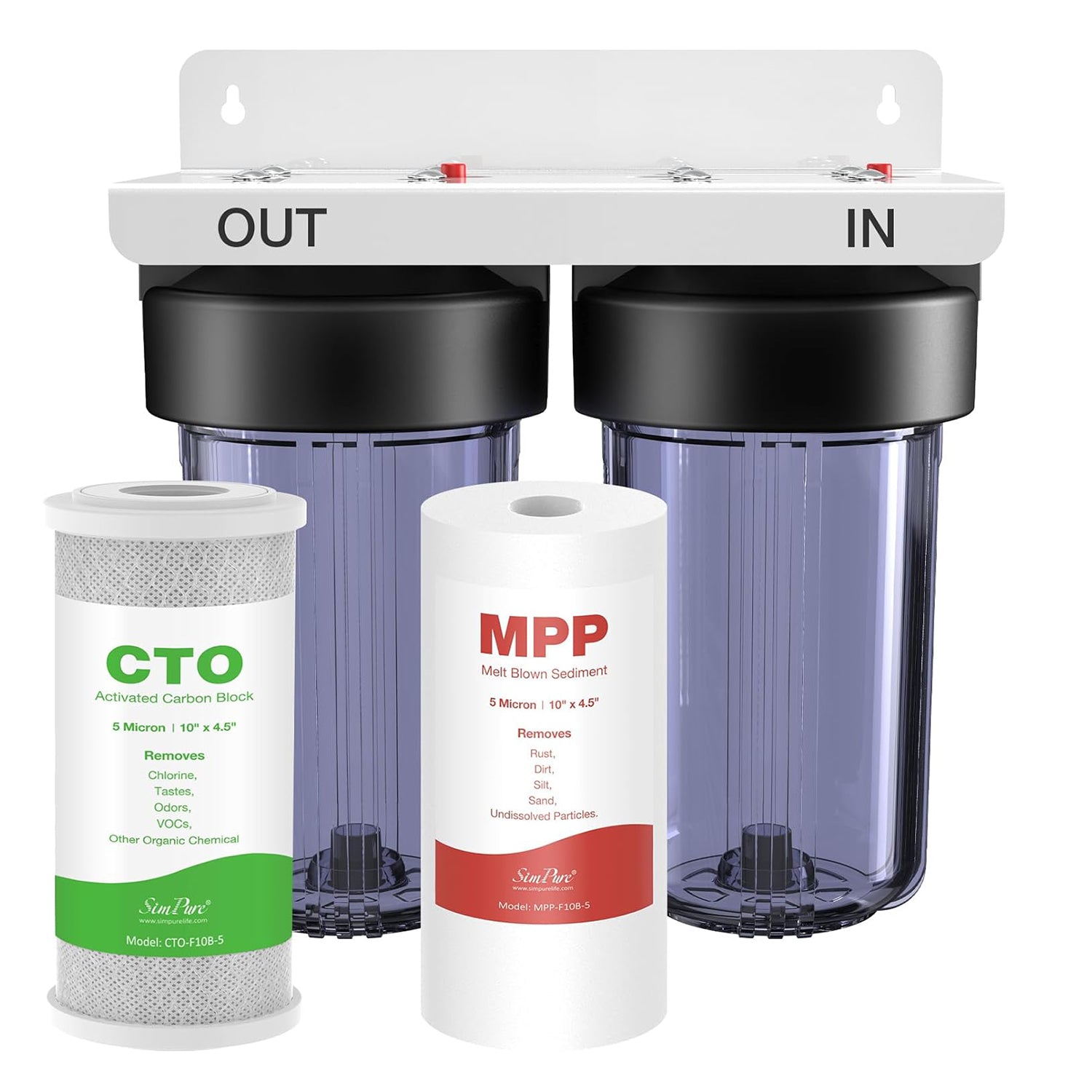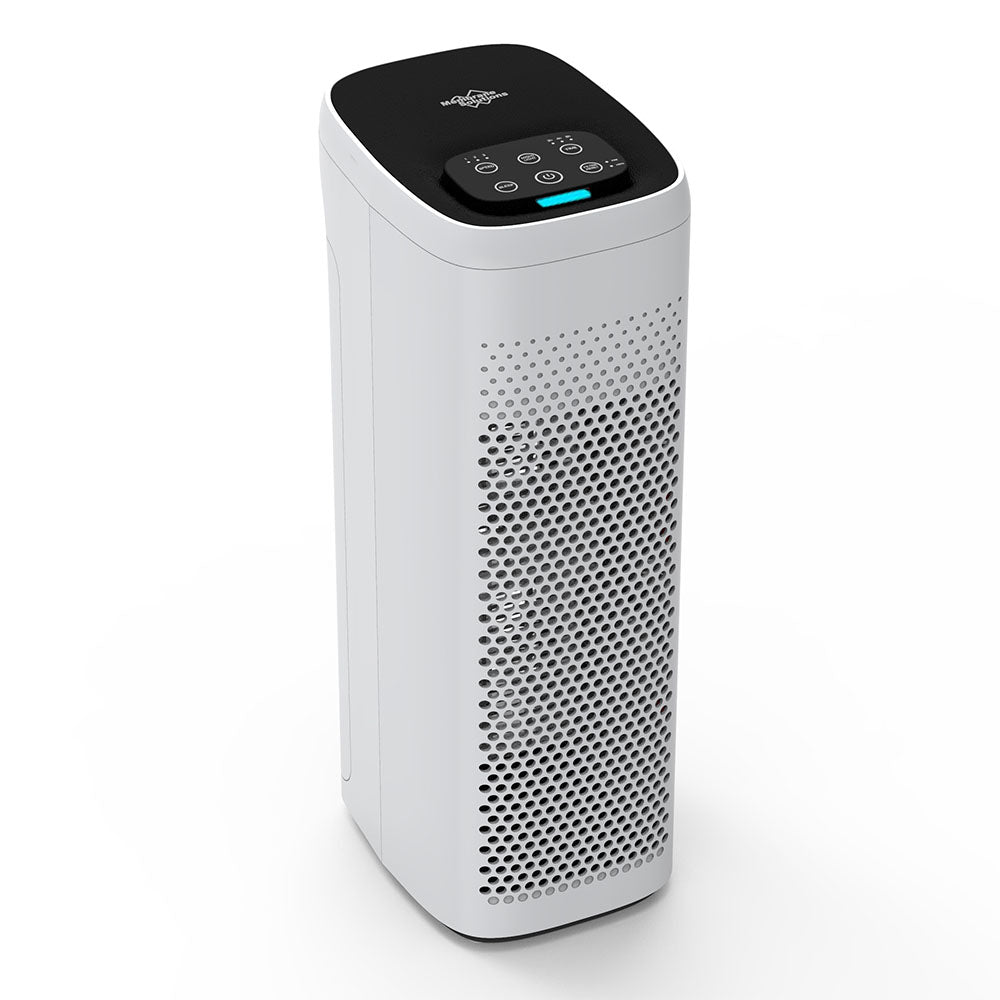With the improvement of everyone's health awareness and the pursuit of quality of life, more and more families have installed reverse osmosis water purifiers.how would you confirm that a colourless liquid is pure water? Next,Simpure will teach you five methods.

Use a transparent cup to catch water for observation
We can use a transparent glass to fill a glass of water filtered by a household water purifier or water filter for office, and then carefully check whether there are any suspended fine substances in the water in the direction of sufficient light. If there is, it means that the filter effect of the water purifier is not good.
Of course, if it is a new water filter, you need to let its water drain for a while to flush out the protective liquid on the surface of the filter element. If there are some bubbles, it may also be caused by the air in the water. In this case, it can be observed by standing still.
We can take a glass of water, close the lid, let it stand for three hours, and then observe whether there is sediment at the bottom of the cup. If there is, it can indicate to some extent that the filter effect of the water purifier is unqualified.
Check for chlorine by smell
The so-called odor of chlorine is actually the odor of disinfectant water, usually after taking a glass of water, it will disappear after a while. We can take a glass of water from the tap and smell it to see if there is a smell similar to disinfectant water. If there is, it means there is residual chlorine in the water, and you need to pay attention to it in normal use.
Then we can take another cup of water filtered by the water purifier and smell it. If there is no smell similar to the disinfectant water mentioned above, it means that the water purifier has exerted its own filtering effect.
Check for scale after boiling
Under normal circumstances, there will be a layer of obvious scale on the inner wall of the kettle at home, because our tap water is relatively high in hardness and the content of calcium and magnesium ions is also high, so the appearance of scale is normal.
After the work of the reverse osmosis water filter, the calcium and magnesium ions in the water can be filtered under the action of the RO membrane's 0.0001 filtration accuracy. So we just need to use a clean kettle to boil the water purified by the water purifier, and check the inner wall of the kettle after using it continuously for about a week. If there is no scale, it means that the filtering effect of this reverse osmosis water purifier is satisfactory.
Judging by the side of the tea

Under normal circumstances, we can use the above five methods to judge the filtration effect of the reverse osmosis water purifier at home. Of course, there may be some special circumstances. If you have any doubts about the water purifier you purchased, you can directly contact the merchant for
This is because magnesium ions can easily form complexes with tea polyphenols, caffeine, proteins and other substances in tea leaves to precipitate out. A small amount of these precipitates will deepen the color of the soup, and a lot of it will form a turbid tea soup, which will also cause a stagnant and rough feeling in the taste.
So we can make tea with purified water to see if the tea soup has the above situation.
Judge by TDS value
When buying a reverse osmosis water purifier, the merchant will generally give a TDS meter, or the water purifier comes with a measurement effect. We can take a cup of tap water to measure the TDS value of the water, and then take a cup of purified water to measure the TDS value. The TDS value refers to the total amount of dissolved solids. The higher the TDS value, the more impurities are contained in the water. The impurities usually refer to the concentration of Ca2+, Mg2+, Na+, K+ plasma in the water.
Although the TDS value cannot be used as the only criterion for judging the quality of water, we still have certain reference value to judge whether the water purifier is effective by measuring the TDS value of tap water and purified water.
Under normal circumstances, we can use the above five methods to judge the filtration effect of the reverse osmosis water purifier at home. Of course, there may be some special circumstances. If you have any doubts about the water purifier you purchased, you can directly contact the merchant for consultation.



